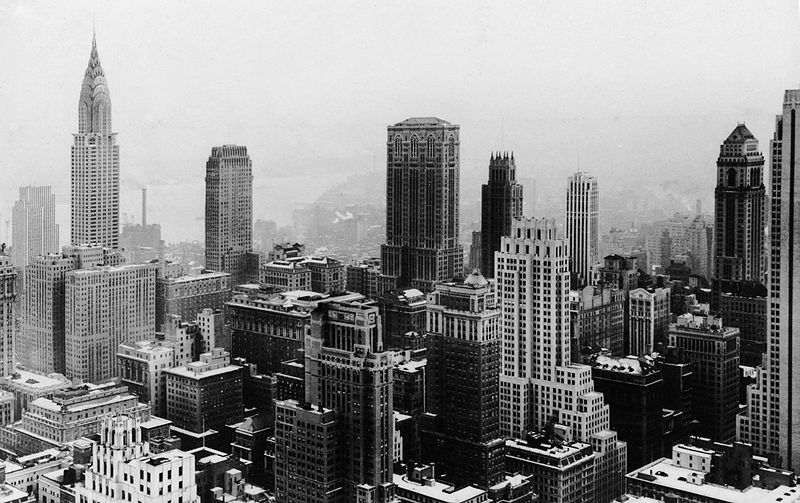Jul 05 2011
Posted by under ADMIN ONLY - featured,July 5 Assignment
City Planning in New Jersey and New York
In the early twentieth century, during the Progressive Era, city government established city planning department in order to cope with everyday infrastructure problems, including traffic congestion, air pollution, and substandard housing. The problems of American cities were particularly acute, as much of the growth of those cities occurred with no comprehensive plan. In addition, the sudden quickness of that growth, especially with governments working with a laissez-faire economic policy that pretty much allowed business and industrial concerns free reign, led to many problems in both the physical and social environment.

America's First Garden City
In 1923, the Regional Planning Association of America (RPAA) was organized and offered grand vision for restructuring urban regions. They asserted that uncontrolled expansion was causing unnecessary congestion and that decentralization would relieve pressures of housing and traffic. Stein felt that “Dinosaur” cities like New York were outdated as a consequence of modern technology. These cities required vast amount of financial expenditures for transit and utility systems. They were overly congested and required intensive land utilization that resulted in highly inflated property values. An endless spiral of speculative real estate investments led to more intensive land use and even more congestion. On the other hand, the Garden City Movement in 1898 advocated the concept of “garden cities”. Those garden cities were surrounded by “greenbelts” of parks, farms and open land. The cities would contain enough business and industry to achieve a degree of economic self-sufficiency. They saw “garden cities” as a means to achieve a rational distribution of population and economic growth. In 1928, just prior the Great Depression, they tried to bring Howard’s garden city to the United States by creating Radburn, New Jersey.
Radburn was designed as a community for the affluent. In addition, restrictive covenants prohibited the selling of houses to Jews and to African Americans. Its advocates were bowing to the pressures for privacy, exclusivity, and safety and protection. It was also designed to minimize the requirement for automobiles. Automobiles were relegated to main arterial streets that were on the periphery, thus enabling the separation of pedestrian and vehicle traffic. People were able to wander through the local parks and pathways without worry of traffic, and underpasses were built under major streets. Radburn project represented the growing concern for minimizing the discomfort and dangers posed by the automobile. It became an inspiration for Resettlement Administration during the Great Depression.

Le Corbusierian "Radient City" from Plan Voisin of Paris designed in 1925
New city planning in the twentieth century has also been influenced by the modernist movement. In 1939, at the New York World’s Fair, General Motors had an exhibit that many consider the highlight of the fair. In its highways and horizons building, General Motors constructed a miniaturized scale model of a United States of the future – Futurama. The scale model consisted of a half-million individually designed buildings and thousands of miles of multilane highways. It was the future city of towers and highways, highly influenced by Le Corbusierian “Radient City”. Futurama articulated the view that the success of future city rests on the development of better and more efficient transportation. It was an illustration of the continued progress in high way design and construction, the expanded use of automobiles and the increased contributions of industry. This model greatly influenced in the building of post-World War II America and in urban renewal, interstate highways, and suburbia. Robert Moses, who was New York’s Park Commissioner and urban planner. He was influenced by “trafficgenerating” capacity of highways and driven the building of highway systems that served the city, for example the Long Island Expressway, the Triborough and Verrazano Bridges. Futurama became the prototype for the urban reconstruction of New York.



General Motor’s Futurama model of the city of the future, images from the New York World’s Fair’s brochure of 1939-1940
Comments Off on City Planning in New Jersey and New York





















